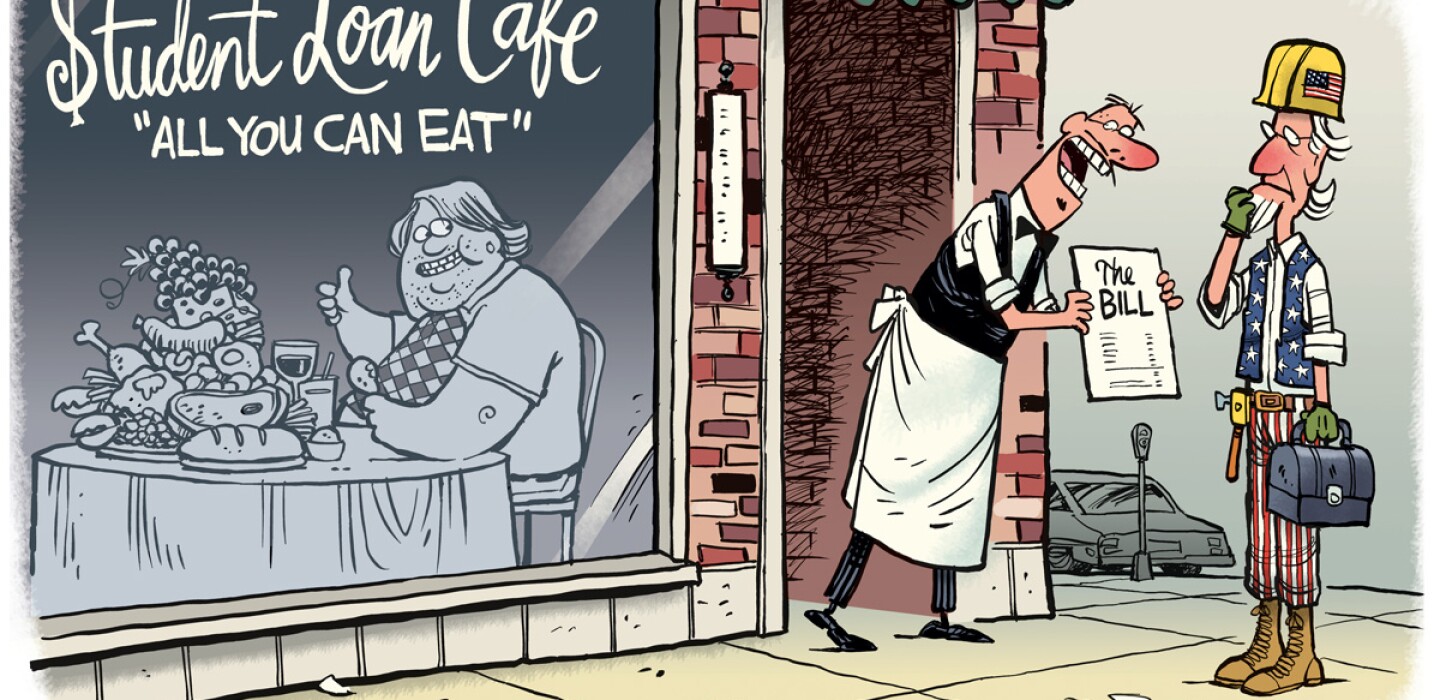
My inner skepticism stirred in late August when President Joe Biden announced he was canceling student-loan debts by executive order. It has long been my belief that delivering on a campaign promise meant navigating both chambers of Congress. The valid use of an executive order by a president is based on a previous grant of congressional authority. The president’s broad cancellation of student-loan debt while bypassing Congress was too good to be true because, on its face, the program circumvents the checks and balances demanded by the Constitution.
Oral arguments in Biden v. Nebraska are scheduled for Feb. 28. The Supreme Court will answer one, and possibly two, legal questions when deciding the case. The first is whether the six plaintiff states seeking to block the cancellation program had legal standing to bring a lawsuit. If the first question is answered with a yes, then the second question will be whether the executive branch violated its grant of legal authority from Congress.
The lower courts, which are the Eight Circuit Court of Appeals and the Eastern District of Missouri District Court, did not answer whether the executive branch’s cancellation program violated the law. The purported legal authority for granting student-loan debt relief was the HEROES Act of 2003. Interestingly, the underlying legislation to this law, introduced by Minnesota Rep. John Klein, passed both chambers of Congress before being signed by President George W. Bush. The HEROES Act permitted the executive branch to grant relief to any affected person, which includes an individual who “suffered direct economic hardship as a direct result of war or other military operation or national emergency, as determined by the Secretary.” The act expired on Sept. 30, 2005.
The student loan debt cancellation lawsuit brought by the states of Arkansas, Iowa, Kansas, Missouri, Nebraska, and South Carolina was dismissed because the judge decided that none of the plaintiffs had standing to sue. A plaintiff must show three things when suing a defendant in order to have standing. First, an individual or entity must demonstrate “a concrete, particularized injury that is actual or imminent.” Second, the injury must be traceable to the defendant. And third, that a court decision can fix the harm caused. Only the first part of standing to sue is at issue in the student loan debt cancellation suit.
The lower court decided the cancellation program may harm agencies or companies created under each state’s laws but not the states themselves. These agencies or companies were not the ones to sue the executive branch. The most well-known agency within the case is the Missouri Higher Education Loan Authority (MOHELA). The Eighth Circuit found the servicing agencies or companies had sufficient connections to the plaintiff states to grant them standing. The Eighth Circuit reversed the district court’s dismissal decision and granted a preliminary injunction against the debt relief/cancellation program in favor of the plaintiff states.
If the Supreme Court does its job correctly, it will not answer whether the executive branch exceeded its legal authority by using an executive order. The Supreme Court should restrain itself to whether the plaintiffs had standing to sue and should steer clear of taking a position on the legality of the cancellation program.
But this Supreme Court has a penchant for surprises. My professional prediction is that the highest court will find that standing exists so there is an opportunity to answer the question about the legality of the cancellation program. If the court rules on the validity of the cancellation program, it will yield disappointment for millions of consumers, including me.
Benjamin Kaasa of Duluth is an attorney licensed in Minnesota and Wisconsin with a bachelor of arts degree in political science. He primarily practices family law, consumer bankruptcy, and estate planning.

